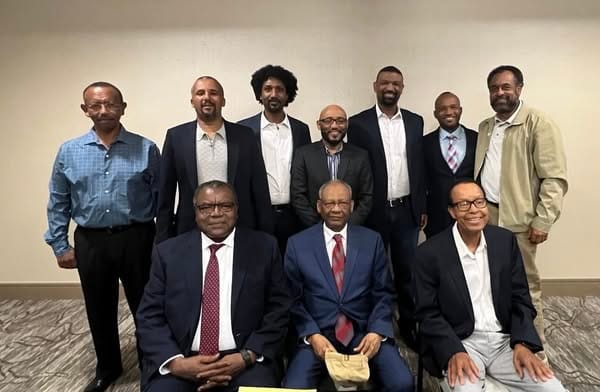The Habesha News Desk
August 2, 2025

The “Agreement and Resolutions of Oromo Scholars and Political Party Representatives,” issued on July 31, 2025, from Seattle, Washington, marks a significant attempt to articulate a united Oromo political voice in the diaspora amid the escalating political crisis in Ethiopia. The document presents a strong indictment of Prime Minister Abiy Ahmed’s regime, rallying support for a broad-based resistance movement and calling for solidarity across ethnic and political lines. While it has commendable elements in its rhetoric and urgency, the document also suffers from notable weaknesses in strategic clarity, inclusivity, and practical implementation.
Strengths of the Statement
1. Unambiguous Condemnation of Authoritarianism
The statement’s central argument—that the Abiy Ahmed regime has inflicted immense harm on the Oromo people and the broader Ethiopian population—is both powerful and timely. It positions the regime as the principal architect of violence, displacement, and ethnic division. This diagnosis resonates with growing domestic and international concerns regarding authoritarian tendencies, militarization, and the erosion of democratic processes in Ethiopia.
2. Emphasis on Unity and Cooperation Across Ethnic Groups
The resolution’s fourth and seventh points are notable for their emphasis on interethnic solidarity. In a country historically marred by ethno-political fragmentation, the call for unity between Oromo and other “brotherly peoples” is a step toward building a more inclusive and stable post-Abiy Ethiopia. This reflects a welcome maturity in political thinking, recognizing that liberation and justice cannot be achieved in isolation.
3. Recognition of Regional and International Dimensions
The resolution rightly acknowledges the importance of regional diplomacy and international engagement. By appealing to neighboring countries and global institutions, the representatives signal a shift from isolationist rhetoric toward external advocacy. In the current geopolitical landscape of the Horn of Africa, this is not only practical but necessary.
Shortcomings and Areas for Improvement
1. Lack of Political Nuance and Strategic Alternatives
The document frames the removal of the current regime as both necessary and imminent but offers little in terms of concrete strategies to achieve this. There is a strong revolutionary tone, but no roadmap for the “transition” repeatedly referenced. Who will lead the transition? How will power be shared? What mechanisms will prevent the rise of a new authoritarian regime post-Abiy? The absence of these answers weakens the call to action.
2. Overreliance on Symbolic Language
While rhetorical flourishes like “Victory will come through our struggle!” may inspire supporters, they do little to advance substantive dialogue or clarify governance alternatives. In a context as volatile as Ethiopia’s, political slogans must be balanced with well-articulated frameworks for peace-building, democratic transition, and institutional reform.
3. Diaspora-Centric Disconnect
The resolutions were issued in Seattle, far removed from the lived realities of Oromos and other Ethiopians facing violence, repression, and economic hardship within Ethiopia. While the diaspora plays an essential role in advocacy and resource mobilization, it must take care not to alienate or overstep those on the ground. The statement could have benefited from direct voices or testimonies from within Oromia to reinforce legitimacy and relevance.
4. Limited Engagement with Broader Ethiopian Opposition
Although it mentions consultations with other “peoples and citizens,” the resolution largely centers on Oromo organizations (OLF-ONESE, OFCO, ONLF). It misses an opportunity to lay the groundwork for a more inclusive opposition coalition that spans Ethiopia’s diverse political landscape, including Amhara, Somali, Tigrayan, and Southern nations’ representatives.
Conclusion: A Necessary Yet Incomplete Intervention
The Seattle resolution is a bold and passionate document that captures the frustration of many Oromo and other Ethiopians in the face of state violence and authoritarian consolidation. It is an essential step in mobilizing diaspora consensus, and its call for unity, dialogue, and regional awareness is commendable.
However, for this initiative to translate into a viable political force, it must evolve beyond condemnation and slogans. A successful transition will require coalition-building across ethnic and ideological lines, detailed governance frameworks, and genuine partnerships between the diaspora and domestic actors. The struggle for justice and democracy in Ethiopia demands both moral clarity and strategic depth—qualities that future iterations of this resolution must strive to embody.

The assertion of Oromo intellectuals who oppose Abiy Ahmed and Shimelis Abdissa’s claim of representing the Oromo government must reconcile with their past criticisms of the Amhara people is problematic. Critiques of past governance should not be dismissed or used to stifle current dissent. Constructive dialogue and open discussion, rooted in factual analysis and free from inflammatory rhetoric, are essential for addressing the diverse challenges facing Ethiopia. Accusations of this nature should be framed within a broader context of accountability and transparency, prioritizing factual evidence over subjective interpretations. The focus now should be on fostering reconciliation and addressing the root causes of ethnic tensions, rather than perpetuating divisive narratives propagated by the ruling class. A government which subjects other ethnic groups will also subjugate its own ethnic group.
Some of these individuals are well known in their roles in what took place in Ethiopia in recent times and in particular in Oromia. In their own words, they have played leadership roles in starting conflicts in Oromia in which properties were destroyed and lives lost. They are proud of that with no sense of contrition.
It is an interesting photo. Who is guy the first one from l-r standing in the back row with big rabbit ears and fat head? He is standing with his right hand clinched and ready to pummel someone he hates so much preferably a neftegna. I’ve had a chance to talk to 4 of those in the photo during various gatherings in the past. Their narratives were somewhat worrying to me. My worries were justified in what happened since then in Oromia. I like the hair style of the one standing with a big Afro. He is ready to go back to duke it out with Abiy.